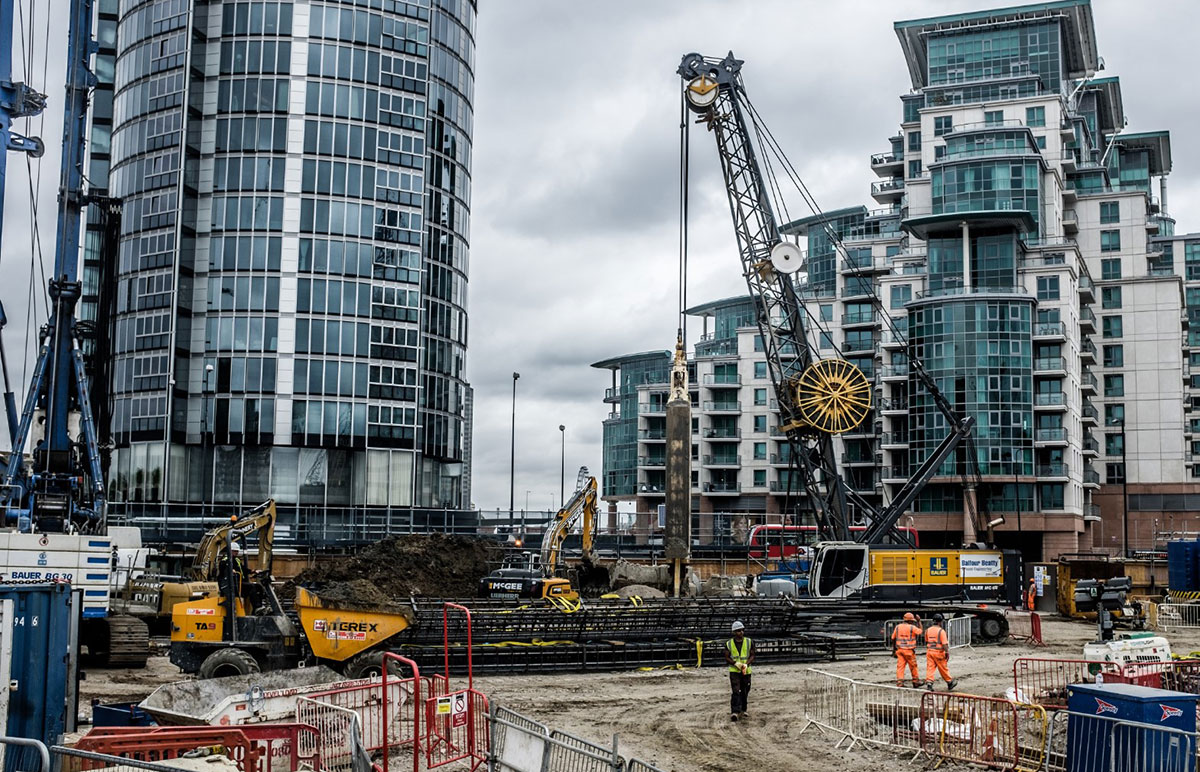The Facts About Geotheta Uncovered
Table of ContentsExcitement About GeothetaThe Ultimate Guide To GeothetaThe Greatest Guide To GeothetaGeotheta Fundamentals ExplainedThe Geotheta Statements

They carry out website investigations, gather samples, carry out laboratory examinations, and evaluate data to examine the viability of the ground for construction tasks - Geo Tech Engineer. Based upon their findings, geotechnical designers provide suggestions for foundation design, incline security, keeping frameworks, and reduction of geotechnical hazards. They collaborate with other experts, such as architects, structural designers, and building groups, to make sure that geotechnical factors to consider are incorporated into the total project style and application
By assessing the actions and buildings of dirt and rock, they can recognize potential geotechnical dangers such as landslides, dirt settlement, or slope instability. Their proficiency helps avoid failures or crashes that might threaten lives and residential property. Below are some in-depth responsibilities and obligations of a geotechnical engineer: Website Investigation: Geotechnical designers conduct website investigations to gather information on subsurface conditions.
They translate the data to understand the properties and habits of the soil and rock, including their strength, permeability, compaction qualities, and groundwater problems. Geotechnical Evaluation and Design: Geotechnical designers examine the information collected throughout website examinations to analyze the stability and viability of the website for building and construction projects. They carry out geotechnical computations and modeling to review variables such as bearing capacity, settlement, incline security, lateral earth pressures, and groundwater circulation.
What Does Geotheta Mean?
Structure Design: Geotechnical engineers play a vital role in developing foundations that can safely support the intended framework. They analyze the soil conditions and load demands to establish the proper structure kind, such as superficial foundations (e.g., grounds), deep structures (e.g (https://geotheta.webflow.io/)., heaps), or specialized strategies like dirt improvement. They consider aspects such as negotiation limits, bearing capacity, and soil-structure interaction to develop optimal structure styles
They review building and construction strategies, screen website tasks, and carry out field evaluations to verify that the layout recommendations are followed. If unforeseen geotechnical issues arise, they analyze the situation and give suggestions for removal or changes to the layout. Threat Evaluation and Mitigation: Geotechnical designers examine geotechnical threats and dangers connected with the job site, such as landslides, liquefaction, or soil erosion.

Cooperation and Communication: Geotechnical designers work very closely with various other specialists involved in a project, such as engineers, structural designers, and building groups. Efficient interaction and cooperation are necessary to integrate geotechnical factors to consider right into the overall project style and building process. Geotechnical engineers offer technological know-how, solution queries, and make certain that geotechnical demands are met.
The Basic Principles Of Geotheta
Here are some kinds of geotechnical designers: Structure Designer: Foundation designers focus on creating and assessing foundations for structures. They assess the soil conditions, load requirements, and site features to identify one of the most appropriate structure type and layout, such as shallow structures, deep structures, or specialized techniques like stack structures.
They evaluate the aspects affecting incline stability, such as dirt residential properties, groundwater problems, and incline geometry, and establish methods to avoid slope failings and alleviate dangers. Earthquake Designer: Quake engineers concentrate on examining and designing structures to withstand seismic forces. They analyze the seismic threat of a site, examine dirt liquefaction possibility, and create seismic design standards to guarantee the safety and security and strength of frameworks during quakes.
They do field testing, collect samples, and assess the accumulated data to identify the dirt properties, geologic developments, and groundwater conditions at a site. Geotechnical Instrumentation Engineer: Geotechnical instrumentation designers concentrate on surveillance and measuring the actions of dirt, rock, and frameworks. They set up and keep instrumentation systems that check variables such as dirt negotiation, groundwater degrees, slope movements, and architectural variations to examine efficiency and offer early warnings of possible issues.
Geotheta for Dummies
They perform examinations such as triaxial examinations, debt consolidation examinations, direct shear examinations, and permeability examinations to collect information for geotechnical analysis and design. Geosynthetics Designer: Geosynthetics designers focus on the design and application of geosynthetic materials, such as geotextiles, geogrids, and geomembranes. They use these products to enhance dirt stability, strengthen slopes, give water drainage services, and control disintegration.
They often tend to be investigative people, which means they're intellectual, introspective, and inquisitive. They are curious, systematic, logical, logical, and logical. Some of them are additionally social, suggesting they're kind, generous, participating, client, caring, useful, empathetic, skillful, and friendly. Does this seem like you? Take our free career test to find out if geotechnical engineer is just one of your leading career suits.
In the office atmosphere, geotechnical engineers make use of specialized software application devices to execute estimations, create styles, and examine data. They prepare reports, review project requirements, interact useful site with customers and employee, and coordinate project activities. The workplace setup provides a conducive environment for research, evaluation, and partnership with various other specialists involved in the task.
What Does Geotheta Mean?
They frequently visit task websites to conduct site examinations, examine geotechnical conditions, and collect information for analysis. These visits include taking a trip to various places, sometimes in remote or tough surfaces. Geotechnical designers might perform dirt tasting, conduct tests, and screen building and construction activities to make certain that the geotechnical aspects of the job are being implemented properly.
Geotechnical designers also function in specialized geotechnical research laboratories. Geotechnical research laboratory engineers work extensively in these atmospheres, managing screening tools, running instruments, and recording data.